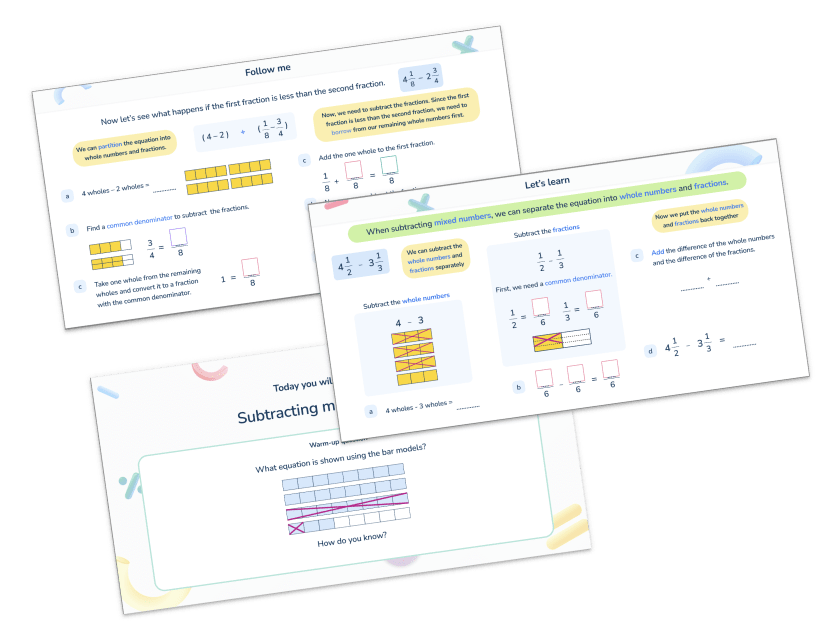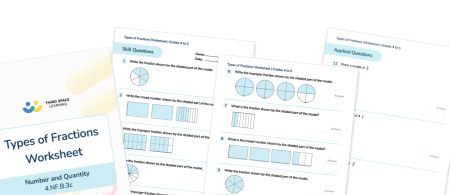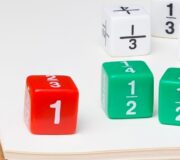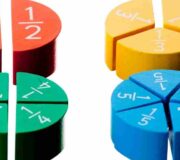What Is A Non-unit Fraction: Explained For Teachers, Parents And Kids
Fractions are taught right from early years, beginning with proper fractions (unit and non-unit) and progressing to improper fractions.
- What is a non-unit fraction?
- Examples of non-unit fractions
- When do children learn about non-unit fractions in elementary school?
- How do non-unit fractions relate to other areas of math?
- Non-unit fractions in real life
- 3 worked examples for non-unit fractions
- 5 non-unit fraction practice questions and answers
What is a non-unit fraction?
Whereas a unit fraction is one part of a whole (the numerator is always 1 i.e. ½, 1⁄7 or 1⁄376. ), a non-unit fraction is a fraction with a numerator (top number) greater than 1.
Non-unit fractions could be proper fractions (less than 1 whole, where the denominator (bottom number) is larger than the numerator) or improper fractions.
Types of Fractions Worksheet
Get this printable worksheet for 4th Grade containing 10 skills-based practice questions and 5 applied questions.
Download Free Now!Examples of non-unit fractions
⅔, 6⁄11 and 29⁄100 are examples of non-unit fractions that are proper (less than 1 whole).
5⁄5, 12⁄12 and 86⁄86 are examples of non-unit fractions that are equal to 1 whole.
7⁄6, 13⁄9 and 48⁄13 are examples of non-unit fractions that are improper (more than 1 whole).
4⁄2, 9⁄3 and 20⁄4 are examples of non-unit fractions that are equal to an integer (whole number).
When do children learn about non-unit fractions in elementary school?
Children will first encounter non-unit fractions in 3rd grade math lessons – namely 2⁄4 and ¾. They are introduced to ½ and ¼, which is then followed by ⅓, 2⁄4 and ¾. Non-unit fractions are prevalent thereafter in the curriculum.
How do non-unit fractions relate to other areas of math?
Non-unit fractions can be found in any area of math that involves a quantity of some sort.

Meet Skye, the voice-based AI tutor making math success possible for every student.
Built by teachers and math experts, Skye uses the same pedagogy, curriculum and lesson structure as our traditional tutoring.
But, with more flexibility and a low cost, schools can scale online math tutoring to support every student who needs it.
Find out more
Non-unit fractions in real life
As above, non-unit fractions can be used in any context that involves a quantity, e.g. ¾ of an hour; ⅔ of the class; ⅘ of a liter, etc.
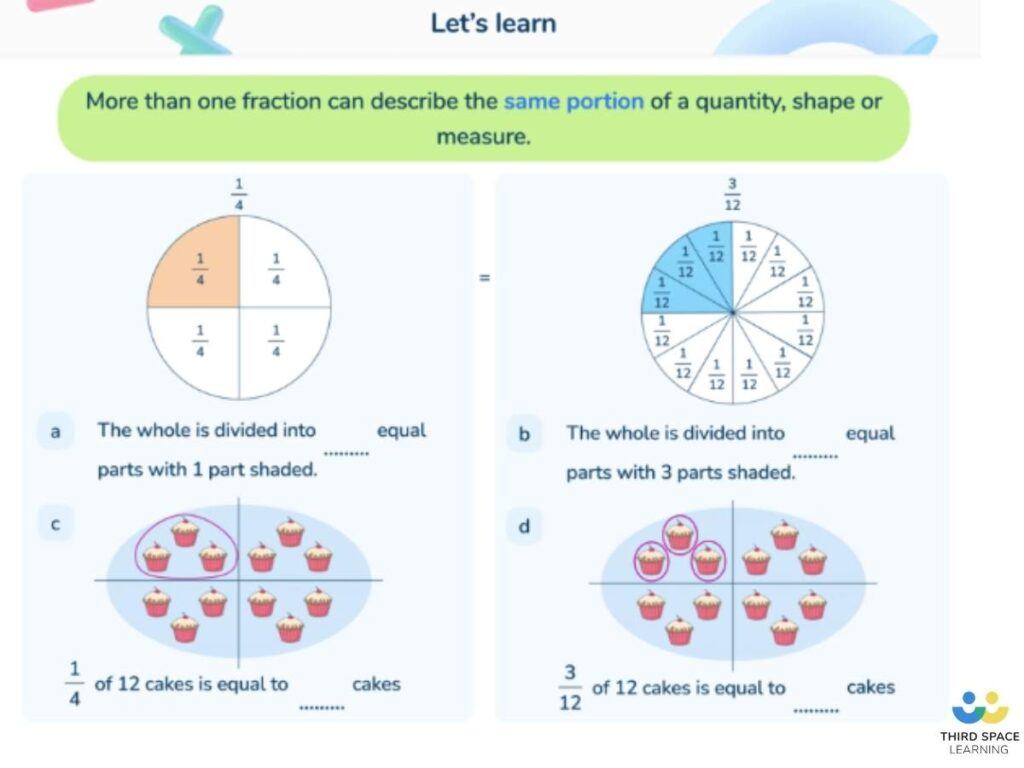
3 worked examples for non-unit fractions
Many fraction questions can be visually demonstrated with the use of bar models (as shown below), number lines, or other similar diagrams that can be clearly split into equal parts.
Fraction of an amount or set of objects
Find ⅗ of 20.
- The denominator shows how many equal parts the whole has been split into (in this case, 5) so divide the whole amount by the denominator (in this case, 20 ÷ 5 = 4)
- The numerator shows how many of those parts we need to find (in this case, 3) so multiply each part by the numerator (in this case, 4 x 3 = 12)
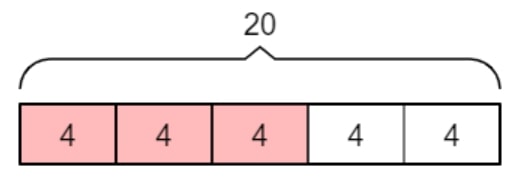
Addition or subtraction of non-unit fractions
¾ + ⅔ or ¾ – ⅔
- In order to add or subtract fractions with different denominators, first find the lowest common multiple of both denominators in order to achieve a common denominator (in this case, 12 can be used as a common denominator)
- Use the common denominator to find equivalent fractions for each fraction (in this case, ¾ = 9⁄12 and ⅔ = 8⁄12, as shown below)
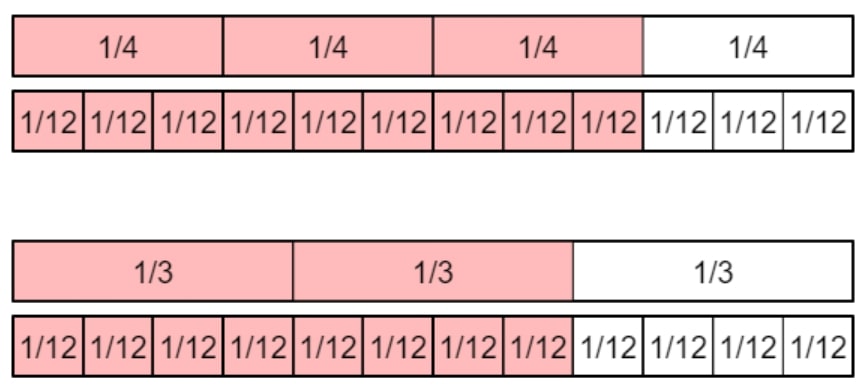
- Once the denominators are the same, the numerators can be added or subtracted as appropriate (in this case, ¾ + ⅔ = 9⁄12 + 8⁄12 = 17⁄12 or 1 and 5⁄12; or ¾ – ⅔ = 9⁄12 – 8⁄12 = 1⁄12)
Shading fractions of various shapes
Shade ¾ of each shape.
For each shape, count how many equal parts the whole has been split into, then find the fraction (in this case, ¾) of that amount and shade it.
This shape has been split into 4 equal parts; ¾ of 4 is 3, so any 3 parts can be shaded.

This shape has been split into 8 equal parts; ¾ of 8 is 6, so any 6 parts can be shaded.
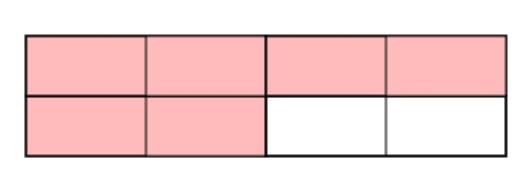
This shape has been split into 12 equal parts; ¾ of 12 is 9, so any 9 parts can be shaded.
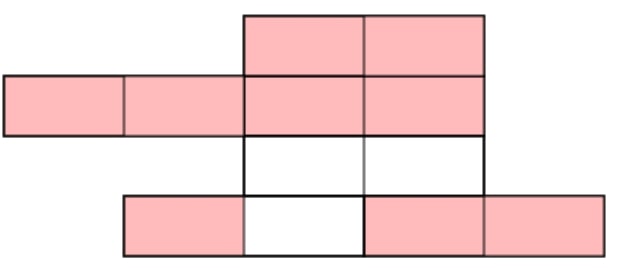
5 non-unit fraction practice questions and answers
- What is 5⁄7 of 35?
Answer: 25 - ⅔ + ⅖ =
Answer: 10⁄15 + 6⁄15 = 16⁄15 or 1 and 1⁄15 - Shade ⅖ of this shape:
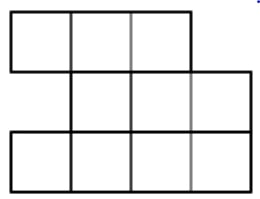
Answer: any 4 parts shaded, e.g.
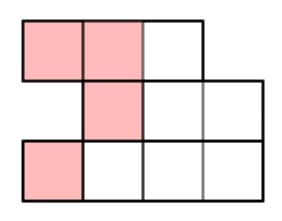
4.Continue the sequence: 2⁄3, 4⁄3, ___, ___, ___
Answer: 6⁄3 or 2, 8⁄3 or 2⅔, 10⁄3 or 3⅓
5. Use a fraction to complete this number sentence: 12 is ___ of 16
Answer: ¾
FAQs
In a unit fraction, the numerator is 1. In a non-unit fraction, the numerator is greater than 1.
Any fraction where the numerator is above one: three-fourths, two-thirds, twelve-tenths, etc.
It depends! As in the “examples of non-unit fractions” section above, when the numerator and denominator are equivalent, the fraction is always equal to a whole. Where those digits are above 1, it is a non-unit fraction. There is only one instance where one whole is considered a unit fraction: 1/1.
For more definitions and explanations of math terms, refer to our Math Dictionary For Kids.
Do you have students who need extra support in math?
Skye—our AI math tutor built by experienced teachers—provides students with personalized one-on-one, spoken instruction that helps them master concepts, close skill gaps, and gain confidence.
Since 2013, we’ve delivered over 2 million hours of math lessons to more than 170,000 students, guiding them toward higher math achievement.
Discover how our AI math tutoring can boost student success, or see how our math programs can support your school’s goals:
– 3rd grade tutoring
– 4th grade tutoring
– 5th grade tutoring
– 6th grade tutoring
– 7th grade tutoring
– 8th grade tutoring
The content in this article was originally written by primary school teacher Sophie Bartlett and has since been revised and adapted for US schools by elementary math teacher Christi Kulesza.
